Taking a baby to party, Xiamen not only has small freshness, but also humanities and technology!

Xiamen is a tourist destination that many people love to visit. It is fresh and has good air quality. The temperature is more suitable all year round. Xiamen also has a strong academic atmosphere. Xiamen University, a key university of 211, and Jimei Village, where Mr. Chen Jiageng donated money for education, are all here. Therefore, it is also suitable for bringing children on a parent-child tour to experience the learning atmosphere. In January, the temperature is still around 20° C in Xiamen, which is a good time to travel.

Wanshi Botanical Garden is a good place to learn about plants and run wild in nature

Xiamen Science and Technology Museum takes you into the magical world of science. Moreover, the Science and Technology Museum is an indoor entertainment venue that is not afraid of the wind and sun. You can play it in spring, summer, autumn and winter!

Jimei School Village is the starting place for Jiageng to run schools.

There are 100 ways to play Gulangyu, and there is always one that suits you

Walking and eating are a must on the pedestrian streets closest to the sea across the country.
[The chatter written in front]
1. How to get there: Xiamen's transportation is very convenient. There are two stations: Xiamen Station and Xiamen North Railway Station. Pay attention to distinction when buying tickets. Xiamen Station is located in the center of the city, and the North Railway Station is located outside the island. However, Xiamen is not large. It is currently very convenient to enter the island from the North Railway Station. There are BRT Express Line 1 and Metro Line 1. There are also multiple buses. Even if you take a taxi to enter the island, it will be solved within 100 hours. North Railway Station currently has more EMU units. Xiamen Airport is on the island, which may be an airport away from the city center. The airport is connected by BRT Express Line 1 and airport buses. There are still many airport bus routes, including Zengcuo 'an and Dongdu Cruise Terminals. Even Zhangzhou and Jinjiang airports in other places also have connections. Internal transportation is even more complete. Currently, the public transportation system covers the island. Most fares are 1 yuan for boarding (very conscientious). There are also BRT and Metro Line 1 connected. Self-driving is not recommended near the scenic spot, and there are few parking spaces.
2. About Gulangyu Island: When you come to Xiamen for the first time, you always have to go to Gulangyu Island. Many friends have consulted many times about how to go to the island. The Xiamen-drum ferry route has been adjusted since October 20, 2014. The original Xiamen-drum ferry route is divided into citizen special lines and tourist passenger routes. At present, when foreign tourists visit Gulangyu during the day, they can take a boat from Xiamen Cruise Center Xiagu Wharf to Gulangyu Sanqiutian Wharf (35 yuan) or Neicuo 'ao Wharf (35 yuan or 50 yuan). Tickets departing from Xiagu Pier, the cruise center, can be purchased in advance through the ferry company's website and the official WX and ZFB, or tickets departing from the terminal can be purchased at the on-site manual window or self-service plane with valid documents. At night, you must take a boat from Xiamen Ferry Terminal opposite Zhongshan Road to Gulangyu. Hall 2 of Xiamen Ferry Terminal is open to tourists from 17:50 to 06:30 the next day (18:50 to 06:30 the next day from June to September in summer). The ticket price is 35 yuan. The ticket purchase method is the same as during the day. You must remember to purchase tickets in advance, and don't listen to scalpers taking you to the island. Now the transition is all facial verification, and you can only travel with one person and witness together.
3. About tickets: Most tickets can be purchased online. For example, the joint ticket for Gulangyu Island, Wanshi Botanical Garden, Science and Technology Museum, etc. can all be booked on the WX public account of the "Xiamen Tourism Distribution Center".
[Recommended parent-child tour itineraries]
Xiamen is not big, but in fact there are many scenic spots. Fortunately, the transportation is convenient, so you can basically visit all the main attractions in three to four days, and you can choose according to your preferences. Recommended three-day parent-child tour itinerary:
D1: Arrival → Go to [Xiamen Garden and Botanical Garden] → Night tour [Zhongshan Road] to eat → Accommodation options Recommended near Zhongshan Road
D2: Go to [Xiamen Science and Technology Museum] → Lunch Recommendation [Jiawei Museum] → Go to [Gulangyu Island] in the afternoon → Accommodation Selection Recommended to stay in Gulangyu B & B
D3: Return to the island after breakfast, take Haijing Metro Line 1 to [Jimei School Village], visit [Aoyuan],[Return Hall],[Chen Jiageng Memorial Hall], etc., recommend [Taste Friends] for lunch, and return in the afternoon
[Plant Time in the Garden Botanical Garden]
Xiamen City Garden and Botanical Garden is located in Wanshi Mountain in the southeast corner of Xiamen Island. It was built in 1960. It is the first botanical garden in Fujian Province and an important part of Gulangyu, Wanshi Mountain National Key Scenic Area, covering an area of 4.93 square kilometers. As one of the key scenic spots and tourist attractions developed earlier in Xiamen City. There are twenty-four scenic spots in Xiamen, and there are six of them within the Botanical Garden, namely,"Wanhu Chaotian","Zhongyan Yuhu","Tianjie Xiaozhong","Taiping Stone Smile","Ziyunde Road","Gaoduqin Cave", covering mountains, caves, rocks, temples and other landscapes. There are many cliff stone carvings in the past dynasties, making it a place where scenic spots are gathered. Among the twenty famous scenic spots in New Xiamen, there are also three in the park: Wanshi Hancui, Tianxiao Bell, and Taiping Stone Smile.

It is generally recommended to enter from the West Gate and get off at Botanical Garden Station, No. 1 Middle School Station or Zhongshan Park Station of the subway. Parking spaces around are difficult, so try not to drive. The gate of the Garden Botanical Garden does not have a big sign and appears quite low-key. Only after passing through the ticket gate is there a stone tablet engraved with the words "Xiamen Garden Botanical Garden".
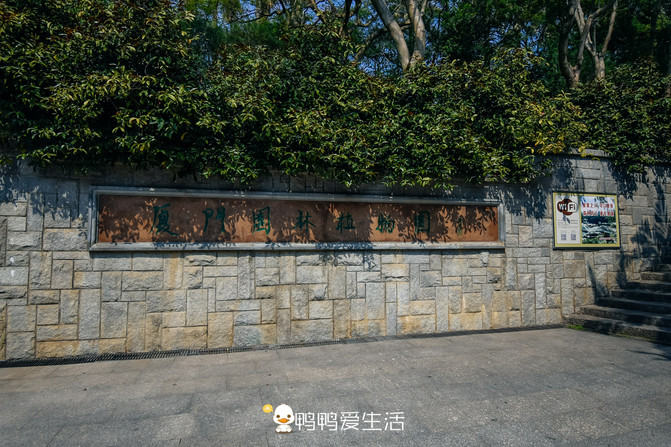
After entering the gate, go up the steps to the right and you can see the first landmark attraction-Wanshi Hancui. Wanshi Lake was originally Wanshiyan Reservoir. It was built in 1952. At that time, it was a war readiness reservoir in Xiamen City. It was formed by the confluence of the two major water systems in the park, Shuimokeng River and Qiao River. Now it has become the core of the botanical garden landscape. The west dam is planted in rows with Washington browns native to America and with a southern charm. The reflection of the lake provides a unique scenery. At this time, there was not much water in the reservoir and the scenery was average, but the "Spring and Autumn" and "Tianqu" bridges on the lake became interesting, and there were also water pavilions such as "Yangzhi Pavilion","Cangqu Pavilion", and "Shiran Pavilion" dotted it with ripples and extraordinary interest. Lakes and mountains are beautiful, and verdant vegetation form one of Xiamen's famous scenery-"Thousands of Stones and Green".

Walking through Wanshi Lake, on the right side is a leafy camphor tree with luxuriant branches. This was planted by Ye Deng himself when he visited Xiamen in 1984. Now it has grown into a towering tree and is booming just like Xiamen. On the back side of the large-leaf camphor tree is a smooth large lawn. This is the Araucaria lawn, including the sparse forest lawn and the Araucaria forest belt. It is one of the scenic spots with obvious characteristics in the park. Tall and straight Araucaria plants are planted. It makes good use of gentle slopes to express the artistic conception of high, large, wide and wide. It is a good place for tourists to rest and play. The broad and smooth lawn is a favorite place for many citizens and tourists. Children run on it barefoot and enjoy the gifts of nature.

If you want to go directly to the rainforest world and the succulent areas, you can walk directly from the road on the right side of the Araucaria Lawn, and from the left side you can lead to the Hundred Flowers Hall, which citizens love more. Take the children and suggest walking directly from the right side. There are battery trucks in the Botanical Garden that can be connected. Although they are all flat roads, it is an uphill road leading to the succulent area and the rainforest world. You can choose to take a battery truck up and down. Let's go to the succulent plant area where the Internet celebrities are popular. The plants planted here are mainly cactus and succulent plants. There are more than 1200 species (including varieties, varieties, etc.) introduced and cultivated. It is the scientific research, science popularization, viewing and teaching of cactus and succulent plants in my country. One of the main bases for teaching.

Many people may think that succulents are small potted plants on the balcony, but here, you can see big things two to three meters high. They are also succulents. The indoor exhibition hall is not open now, and the outdoor exhibition area is also very suitable for taking photos. Most of the various botanical gardens photographed on the Internet come from this, which is very suitable for taking Japanese portrait styles.


After visiting the succulent area, you can go down the road to Dishuiyan. Now the entrance of Dishuiyan is a tourist service center. There is a canteen selling snacks and an "Internet celebrity bus" for tourists to take photos.

Rainforest World, another place for Internet celebrities to check in the Botanical Garden, is also a favorite photo setting place for newcomers. When the spray is turned on, the artistic conception is hazy. One of the two major water systems in the Botanical Garden, the Qiaoxi River runs through it. There are existing scenery scenes of the 24 old scenic spots in Xiamen in the area,"Ziyunde Road" and "Gaoduqin Cave". There is also a cultural relic protection unit in Xiamen City, which was built at the Qiaoxi Bridge during the Wanli period of the Ming Dynasty.

The rainforest world is dominated by rainforest plants with broad plate-shaped roots, dripping leaf tips, flowering on stems, strangulation, epiphytic, etc. Due to the evaporation of the water surface, the air humidity in the area has increased accordingly. In addition, the artificial construction of fog forest systems and spraying equipment has improved environmental conditions and created a high-humidity and foggy atmosphere in the rainforest world, which is more conducive to the growth of various plants. Walking inside and feeling full of negative oxygen ions are two completely different tourist experiences from the dryness in the succulent area.


After visiting the Rainforest World, you can walk back to the West Gate Entrance and Exit for about 10 minutes. If you have time, you can also go in the direction of Tianjie Xiaozhong. Tianjie Temple was recruited and built by Monk Yuesong in the late Ming and early Qing Dynasties. It is dedicated to Guanyin Bodhisattva and Immortal Weng. The couplets in the main hall: "There are all the clouds of charity seeking great scholars, and the wonderful techniques of rejuvenating life support immortal weng" can be seen. In the past, monks here would ring the bell every morning to solve the "108 troubled dreams". The Tianjie Temple is high down and the bells are particularly melodious. The "Tianjie Dawn Bell" has become one of Xiamen's old "Eight Little Scenes" and one of Xiamen's new 20 scenic spots.

Many tourists don't know that the Botanical Garden is actually connected to Nanputuo and can be crossed from Wulaofeng. If you go out from the east gate, you can also lead to Shangli Reservoir Park, a newly promoted online celebrity attraction in Xiamen, and you can visit Meihailing, Xiamen's largest bougainvillea base.
[Eat around Zhongshan Road and experience the time in old Xiamen]
It seems that every city has a Zhongshan Park, and almost every city also has a Zhongshan Road. Xiamen is no exception. You can take a taxi or walk directly to Zhongshan Road from the west gate of Wanshi Botanical Garden. It is not far away.

Xiamen's Zhongshan Road has something special. It is the only commercial street in the country that has direct access to the sea. It is dotted with Nanyang arcade buildings, dazzling LED night scenes, a wide variety of Fujian and Taiwan specialty snacks, and the ancient Nanyin echoing in the streets and alleys., constituting its distinctive style.
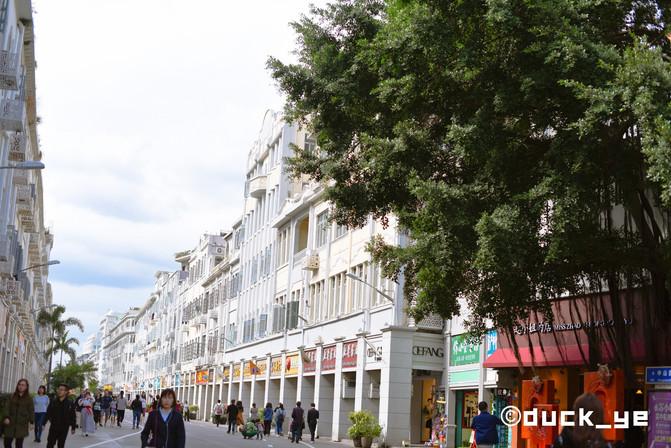
This 1.2-kilometer-long Zhongshan Road gathers hundreds of shops, including food, drink and entertainment. It was once the busiest place in Xiamen. Nowadays, although the passenger flow is not as good as before due to various factors, it is still a must-visit place for many tourists to Xiamen. In addition to the main road of Zhongshan Road, there are also many branch alleys that should not be missed, such as Jukou Street, Zhenbang Road, Shuixian Road, Dazhong Road, etc. These small alleys have a more Xiamen flavor.

There is also Xinjietang, known as the "No. 1 Temple of China". It is a white-domed Romanesque building located on Taiguang Street.

The emerging shopping malls Chinatown and Tiger City also gather a large number of young people.
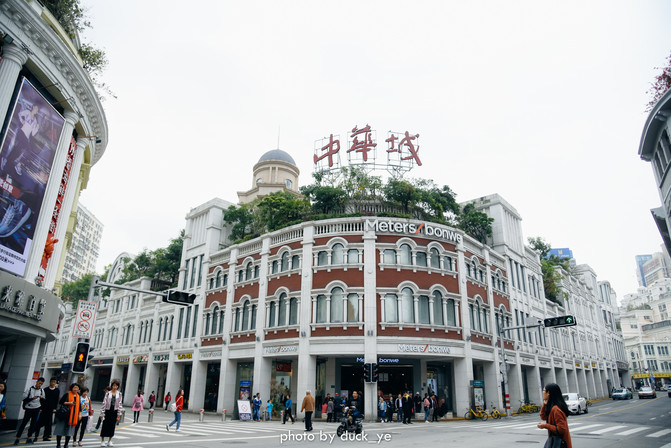
There are many snacks on Zhongshan Road, and it connects eight cities in Xiamen, allowing you to eat without duplicate samples for a day. This "1980 Roasted Meat Rice Dumpling" located on Zhongshan Road is a good choice. It has been in operation for 41 years and has won the recognition of countless citizens and tourists. In addition to the roasted meat rice dumplings in the merchant's name, there are also famous Xiamen snacks such as Shacha noodles and Bian Shi Tang.



[Science and Technology Museum takes you into the world of science]
The vast universe and the sea of stars hide many unsolved mysteries waiting for us to explore. You can know that magnetoelectricity can also dance! Do you know what the world looks like in the fish eye? What kind of scenes are hidden in the deep sea of 10,000 meters? How do we go from a fertilized egg to an adult individual? Everyone has 100,000 whys in their hearts. At the Xiamen Science and Technology Museum, it can answer some of your doubts and take you into the mysterious field of science. No matter adults or children are here, you will have a good harvest!

The science and technology museums in my impression are all dull and monotonous, but the Xiamen Science and Technology Museum can be said to be very vivid. As a national science popularization education base, Xiamen Science and Technology Museum is a first-class comprehensive exhibition hall in the province and advanced in China. It is known as "Science Disney". There are 400 interactive experience exhibits in the five exhibition halls, integrating science and interest.

It is divided into three major areas: the main exhibition hall, the children's hall and the special exhibition hall that is updated from time to time. Each exhibition hall has interesting highlights, and you can spend most of the day in the main exhibition hall alone. Xiamen Science and Technology Museum has become a good place to travel to Xiamen, and bringing children is the first choice.

The main exhibition hall includes the Exploration Exhibition Hall, the Harmony Exhibition Hall, the Creation Exhibition Hall, and the Ocean Exhibition Hall. It and the Children's Discovery Park (additional fee is required), these five exhibition halls are permanent exhibitions. Our exploration begins with the ocean world. The ocean exhibition hall is the country's first exploratory + immersive ocean exhibition hall. The innovative problem-oriented and inquiry-based visit design allow the audience to explore as much as possible. For the mysterious and unknown ocean, there are always more questions than answers.

Let us take the deep-sea elevator together and go down to the depth of the sea at 10900 meters to experience the thrills and excitement of the seabed. Are there unknown creatures in the deep sea?
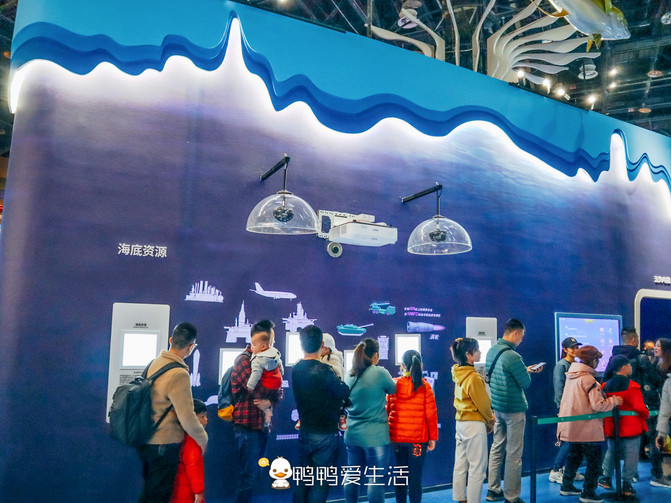
"Jiaolong", the country's most important weapon, is here where we can also see up close the 1:1 true scale restoration model. We can also use the interactive console to simulate the Nanhai 981 drilling platform in "stormy winds and waves" and "stable" scenarios. How can the platform achieve maritime movement, balance and stability?


Of course, marine life is indispensable in the aquarium, whether it is the familiar garden eel or the ugly and cute clown fish. Through the interactive device, you can experience how a fish uses its fins to swim in the sea, and you can also find that the world in the fish eye is really different.


Simulated surfing can experience the thrill of surfing. It's exciting.

After exploring the mysteries of the ocean world, go to the "Exploration and Discovery" exhibition hall. The most must-see performance in this exhibition hall is the "Magnetoelectric Stage". 3-4 performances a day are always packed. Viewers can go on stage to experience the "angry hair rushing to the crown" under the action of a high-voltage electrostatic generator, and appreciate the "dancing" horn-shaped arc that beats with music under a voltage of one million volts.



Feel the ethereal vastness of the universe in the vertigo of the tunnel of time and space

The paper clip will dance to the music, and the magic brainwashing makes people can't help but hum along


Can you walk out of the magic space in the mirror world?


Where did your body go?
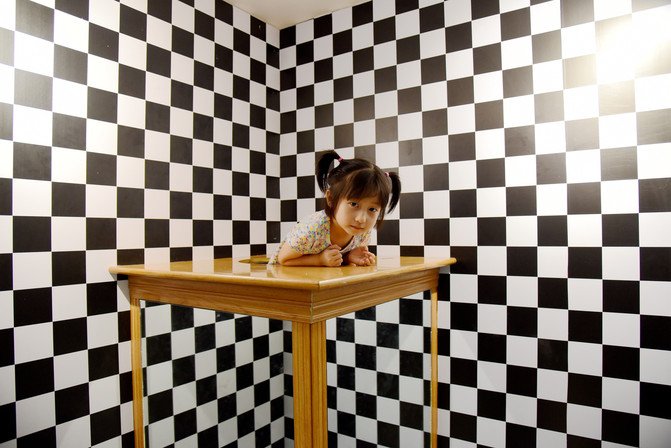
There are children's favorite robots in the "Creating Civilization Museum", and robots are now used in many fields, such as robot bartenders, robot waiters, etc. In the Science and Technology Museum, we can see robots that can play chess, robots that can play Rubik's Cube, etc. These are all free experiences.


The Harmony Exhibition Hall reveals the secrets of the body, from the combination of sperm and eggs to the development of individuals, and how the digestive tract works, you can find answers here!


2-6 Children aged 20 are more suitable to come to the "Children's Future Museum". Children can have fun in jungle expeditions, explore the mystery of water flow in the "magic rain", play games with small balls, and keep having fun!


The Science and Technology Museum will update its special exhibition hall from time to time. The theme of the exhibition is "Mammoth Age". From the perspective of the little mammoth DIMA, we will start a journey through the glacier together.


You can see the fossils of ancient giant beasts here. They are really big. They are indeed the land overlord in ancient times!



AR Interactive-The beast is coming towards you! Between jumping and waving, glacier beasts appeared one after another, filling the screen with visual impact, and every photo was shocking!


You can also watch a hunting battle of saber-toothed tigers in the 4D theater with white snow to witness the growth of the saber-toothed tiger community. The plot is so intense and exciting that the children are so excited that they all cry out after watching it!


In addition, there is also Flying Over the Theater, where you can experience 5D dynamic movies, which is like immersive special effects and three-dimensional pictures, opening a thrilling fantasy journey.


There are also snacks and drinks on sale in the museum, so you can have fun all day.

After visiting the Science and Technology Museum, you can also go to the "Jiawei Restaurant" not far from the Science and Technology Museum for dinner. Since its opening in 1992, it has received favorable comments from countless local diners.

Bean pudding meat soup with fried dough sticks is the main brand of the store and is suitable for all ages. The snow-white bean curd is particularly soft and tender, and there is hand-beaten meat soup underneath. It is recommended to soak the fried dough sticks in the tofu pudding.


In winter, I recommend a pot of steaming and nourishing Huadiao Sesame Oil Chicken

[Slow life on Gulangyu, listening to piano waves]
Gulangyu Island, known as the "Museum of International Architecture", is a popular tourist destination every year. It was once in danger of being trampled by tourists. The restrictions and diversion measures over the years have greatly improved the tourist environment of Gulangyu Island. Gulangyu Island is not big, 1.8 square kilometers, but there are no motor vehicles on the island and can only rely purely on foot (some routes have charging battery cars), so it is important to arrange the route reasonably. The core attractions of Gulangyu Island include Riguangyan, Shuzhuang Garden, Organ Museum, and Haoyue Garden. A better route is to go to the island in the afternoon or evening, spend the night on the island, and continue visiting the next morning.

The first thing you must check in is Riguangyan. Route recommendations: Zhengdamen entrance → Riguangyan Temple → Longtouzhai Ruins → Bobing Cultural Park → Climb to the top → Zheng Chenggong Memorial Hall → Xilin Gate exit

Riguang Rock Temple can be said to be one of the oldest temples on Gulangyu Island. It also has a Minnan-style gate. The main hall is actually inside the rock crevice. There is also a stone statue of Guanyin above the huge stone in the main hall

Up the path on the right side of Riguang Rock Temple is the ruins of Longtou Village, where it is said that Zheng Chenggong stationed troops. The entrance of the cave has the potential of one man dominating the pass and thousands of people. Further up is the statue of Bo Bing, which has an introduction to Xiamen's unique folk custom Bo Bing. If you have time, I strongly recommend that everyone come to experience Xiamen's Bo Bing customs in the eighth month of the lunar calendar

The route to the summit is now a one-way line, also for better management. The steps are narrow and high, so pay attention to your steps. Holidays often take an hour or two to reach the top, so pay attention to sun protection. From the highest point, you can overlook the entire island with excellent scenery. The best position to take a picture of the summit rock is at the second highest point.

The Zheng Chenggong Memorial Hall is near Xilin Gate and is closed on Mondays. You can stop by and have a look. When you go out of Xilin Gate, you can turn right to Sanyi Hall and turn left to Shuzhuang Garden. In fact, the best position to take a panoramic view of Riguangyan is in Shuzhuang Garden.

After coming down from Riguang Rock, you can go to Shuzhuang Garden. It faces the sea and leans against Riguang Rock. It was originally a private villa of the local famous gentry Lin Erjia. The owner named the garden after the homophonic sound of his word "Shuzang". It has Baishuiyang water scenery, volcanic island reefs, and Tuerling alpine meadow beauty. This is the best position to take a panoramic view of Riguang Rock.

Therefore, if there are many people climbing Riguangyan, it is recommended to give up the trip to Riguangyan and go directly to Shuzhuang Garden. A one-way visit in Shuzhuang Garden. After entering the park, you first go to the Hidden Sea Garden on your left and turn out of the Moon Cave Gate. Suddenly, the "sea and sky" are broad and the sea is rushing in. This method of hiding first and revealing later has received surprising results.

Walking to the end of the 44th Bridge and going up to Tingtao Xuan is the most must-miss piano museum in Gulangyu, which displays more than 70 clavichords collected by Mr. Hu Youyi who were transported back to Gulangyu from Australia. The pianos here are not only long and diverse, but also unique.


The first and second phases of the Piano Museum also have piano galleries, where you can see many of the best in the world, and you also deeply sigh with Hu Youyi's lifelong love for piano and his lifelong nostalgia.

After visiting the Piano Museum, you can continue to go down to Bushan Garden. The "Twelve Grottoes" are artificially made connected caves, like Monkey Cave. Because guests cannot find their way out, they are also called Ecstasy Cave. The twelve caves, or twelve caves, are named after the Zi, Chou, Yin,... Wu and Hai branches of the earth. The caves are of different sizes and shapes, with scattered paths circling up and down, winding and confusing.

Shuzhuang Garden takes about 1-2 hours, but the garden is large and the area is spacious, making it less prone to congestion at Riguangyan.
The Organ Museum was designed by John Yu, a Dutch-American, former director of Gulangyu Salvation Hospital. Drawing on some classic architectural styles of Balestam, Greece, Italy and China, it designed this unique antique building that integrates Eastern and Western architectural cultures. The dome is 10 meters high and has 8 ridges. It is placed on an octagonal platform. The top windows are 24 in all directions. People call it the "Bagua Tower" and can be seen on the ferry bound for Gulangyu. She is highly recognizable.


There are many styles of organs collected in the museum, including the central atrium, which is an ultra-large 6-meter-high Norman Beer organ, which is two stories high.

There are explanations and organ performances every hour, so don't miss them, otherwise it will be difficult to imagine the mystery of the organ and its differences from the piano just by looking at the exhibits.

A visit to the Organ Museum takes about 1 hour.

Haoyue Garden, the Haoyue Garden located at the eastern end of the island, is named from the word "Haoyue" in Zheng Chenggong's poem "I can't sleep when I miss you, the bright moon shines through the plain curtain", expressing the memory of the hero and the longing for Taiwan compatriots. It is the only sculpture park in China built to commemorate the national hero Zheng Chenggong. It consists of Zheng Chenggong's memorial stele gallery, the emperor's hall, etc., as well as Zheng Chenggong's giant stone carvings and bronze groups to synthesize the "bright moon glory".

Of course, the first thing that attracts most attention is the giant statue of Zheng Chenggong, which was completed in 1985 and is also the largest stone statue of a historical figure in my country.

If you stand on the Fuding Rock, you can't get a full picture of the statue. The best shot is on the beach below. On Fuding Rock, you can take pictures of the opposite sea view, Twin Towers, Sword Stone, and Yindou Stone. If the weather is good, it will be extremely beautiful.


The tour takes about 1 hour. Moreover, in fact, you may not want to enter the park, so you will have a better perspective from the outside.
Finally, let's talk about Gulangyu's food. With Gulangyu's specialties, the online celebrity shop Miss Zhao and Zhang Sanfeng are not the original creatures of Gulangyu. The real Gulangyu people have eaten delicious and inexpensive fish ball soup since childhood, Longtou Beizai cake, Ye's Ma Ci, and Shenjia Rice Roll. These four are concentrated in the area of Longtou Road Street Center Park, so they are relatively easy to find.




[Jimei School Village, feel Mr. Jiageng's patriotic feelings]
When it comes to Xiamen tourism, many people think of Gulangyu Island, Zengcuo 'an, and Xiamen University. However, if you have time, as a local, I strongly recommend you to go to Jimei District outside the island, which has more beautiful scenery and humanities. Jimei is extremely beautiful. The environment here is quiet and elegant, and the scenery is beautiful. This is the birthplace of Kageng's school. Chen Jiageng's former residence, Aoyuan Returning Garden, Lilin Garden, Dragon Boat Pond, Crocodile Garden, Wanbao Mountain Sightseeing Orchard, Xuecun Building Complex, etc. are all cultural landscapes with unique charm of southern Fujian. The world's largest aquatic "Garden Expo Park" is located in Jimei. The most convenient way to Jimei Xuecun now is to take Metro Line 1. It is known as the subway with the most beautiful sea view. On Gaoji Seawall and Jixing Seawall, it crosses the sea through elevated and ground methods to cross the sea. This section can be seen The beautiful scenery of the coastline, and some people say that the cross-sea subway section from Gaoqi Station to Jimei Xuecun is a reproduction of the scene of "Spirited Away in a Thousand".


After leaving the Jimei Xuecun subway station, you will arrive at the most magical school. Say it is a school, but it is actually a village. Jimei School Village is the general name for various schools and cultural institutions in Jimei. It is located in Jimei Village. It was founded in 1913 by Mr. Chen Jiageng, a famous patriotic overseas Chinese leader, and is well-known at home and abroad. A talent training system has been formed from preschool education to primary school, junior high school and from undergraduate education to master's and doctoral education. It is not only a place with beautiful scenery, but also a tourist attraction that gathers beauty. Its architecture integrates Chinese and Western styles into one furnace, reflecting the architectural style of a typical overseas Chinese hometown in southern Fujian. Compared with Xiamen University, which is crowded with tourists, Jimei School Village has a more peaceful scenery.

You can see the gate of this "Jimei School Village" after walking about 200 meters from the subway station exit. Jimei Xuecun was founded under the personal guidance of Mr. Chen Jiageng. Its architecture integrates Chinese and Western styles into one furnace, reflecting the typical architectural style of the hometown of overseas Chinese in southern Fujian. Whether it is tall and spectacular school buildings or small and elegant pavilions, corridors and pavilions, they are all covered with glass roofs, dragon ridges and phoenix eaves, and carved beams and painted buildings. People call them the "Jiageng style".


You can first follow the gate of Jimei Xuecun and go up Jiageng Road, passing through the Navigation College and Funantang. Jimei Navigation College is a national focus. Of course, this place was also jokingly called the "Monk Temple" by us back then.


You can walk all the way from Jiageng Road to Shigu Road. You can find that the scattered colleges and residential areas are integrated. Most of the schools are open and do not have strict access control. With few tourists, there is a more peaceful academic atmosphere.


You can walk along Shigu Road to Jingxian Park and then to the headquarters campus of Jimei University. The headquarters campus is the latest campus and has been continuously expanded in recent years. There are pavilions, lakes and egrets. The scenery of the Shang Building is beautiful. The Jiageng Library is majestic. What makes people even more funny is the tree-lined path. There are lovely sculptures on the path.



After coming out of this college, I recommend going to Weiyou for lunch, bamboo shoot jelly and Weiyou duck noodle line with gold bricks are all worth recommending.



After dinner, you can continue to Dashe Community, which has a history of more than 700 years. There are traditional red brick ancient houses in southern Fujian, and like Gulangyu and Zhongshan Road, there are various overseas Chinese buildings that combine Nanyang style, Spanish style and other Chinese and Western styles. You can navigate the "Dashe Theater" or "Dashe Shacha Noodle".


The times have left a strong mark here. You can see these historical marks that are difficult to see on the island in Dashe. It is comfortable and peaceful here. Walking here, it seems that everything around us is slowing down. Chen's Ancestral Temple, a traditional layout of the Southern Fujian Ancestral Temple, walks inside, and the high-hanging plaques can't help but make people respect this great patriotic leader who devoted all his efforts to donate money to education.


And this place is also being built into a cultural district and an Internet celebrity graffiti street, giving this ancient house new vitality.

When you come to Jimei, you must also visit Jiageng Park. Currently, the Chen Jiageng Memorial Hall has been expanded in Jiageng Park and leads to Aoyuan. The entire scenic area is open for free. In the Tan Kah Kee Memorial Hall, you can learn about Mr. Tan Kah Kee's life experience and his great feelings of donating money to education. He is really a very admirable old man.


This is also the best spot to view the panoramic view of Jimei Bridge. The sea and sky are in the same color, and a white bridge spans it, which is beautiful.

Aoyuan is divided into three parts: the porch, Jimei Liberation Monument and Mr. Chen Jiageng's tomb. Entering the park is a 50-meter-long porch. The walls of the two sides are engraved with 40 bluestone embossed of ancient and modern historical figures, and three-dimensional serial statues. Many characters are in various shapes and vivid images. It can also carve various expressions of joy, anger, sorrow, and joy. The rolling red flag is as thin as paper, and the arms held high are as thin as pens and chopsticks. It is really ingenious and a miracle on earth.


In the center of the park stands the "Jimei Liberation Monument". In front of the monument is a 7-meter-high and 30-meter-wide light wall. The word "Natural History" is engraved in the middle and there are 12 embossed pieces. Tan Jiageng's tomb is shaped like a horseshoe, with 15 bluestone embossed around it introducing Mr. Tan's important experiences in the first half of his life.



There are also group carvings of peaches, plums and fangfei in Jiageng Park. The group carvings show a group of teachers and students looking up at the "Jimei Liberation Monument" and remembering Jiageng's grace. It shows the prosperity of Mr. Chen Jiageng who founded education and filled the world with peaches and plums.

The garden is full of pavilions and pavilions scattered high and low, which is a reflection of the combination of Chinese and Western styles. Among them, the most representative ones are "Ao Ting" and "Mingshi Ting", both built simultaneously with Aoyuan in the 1950s and 1960s and are extensions of Aoyuan's architectural landscape.

Not far from Jiageng Park, there are also Guilai Hall and Chen Jiageng's former residence, which can be visited together and is free of charge. The bronze statue of Mr. Tan Jiageng stands in front of the Return Hall. There is a hall and more than ten wing rooms. A sitting stone statue of Chen Jiageng is placed in the center of the hall, and a couplet written by Guo Moruo and a tribute to Chen Jiageng's memorial to the All-China Federation of Overseas Chinese are hung and arranged.
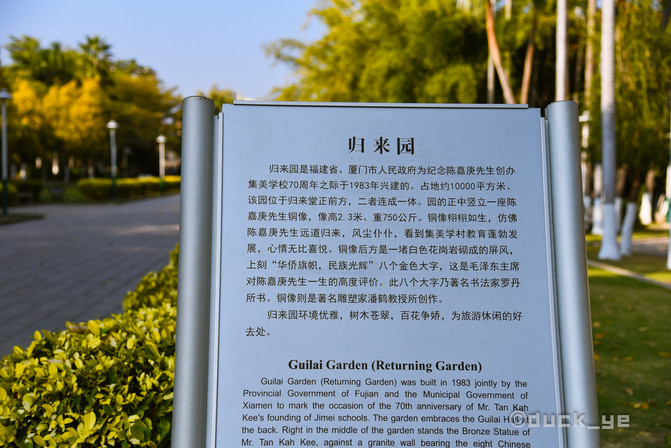
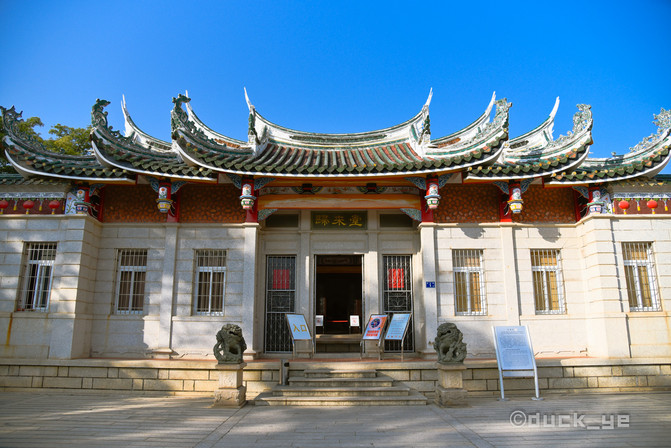


On the back side of the Return Hall is also the former residence of Chen Jiageng, which is built with white stone walls and covered with green tiles. It is a representative building with southern Fujian characteristics. The display mainly consists of pictures, charts and objects, vividly introducing the life of Mr. Chen Jiageng, an overseas Chinese leader. If you visit it carefully, you can better understand the patriotic feelings of this great old man.




Guo Moruo once said: "Seeing the Aoyuan Museum is better than hearing about everything. Thousands of people in Jimei Middle School in Lujiang admire the Spring and Autumn Festival." He spoke highly of the rich cultural connotation and precious artistic value of Aoyuan Museum. When visiting Xiamen, you must visit Jiageng Park to truly understand Xiamen's history, Jimei's history, and even modern Chinese history.
To talk about the essence of Jimei School Village, it should be the one near the Dragon Boat Pond. The Dragon Boat Pond was built by Mr. Kageng in 1950. Mr. Chen Jiageng once said: In the past, Bie-chan wanted to be in the limelight and win the championship. The dragon boat race we advocated was to exercise the body and strengthen the people's physique, to compete in unity and style, and to commemorate the patriotic poet Qu Yuan. It is especially beautiful here when no events are held.

There are several antique buildings with glazed tile-roofed towers, corridors and pavilions built around the Dragon Boat Pool. The "Nanhui" Pavilion in the center of the north bank is the main viewing platform and command platform. The building is of corridor style, with double-layer octagonal pavilions connected at both ends. The middle is a two-story building with double eaves and a mountain top, all of which are glazed tile roofs. The pavilions around the Dragon Boat Pond have an architectural style with strong southern Fujian characteristics that is deeply influenced by Southeast Asian culture. They are an important part of the Dragon Boat Pond.

Jimei Middle School by the Dragon Boat Pool is known as the most beautiful middle school in the world. The landmark building Nanxun Building is full of the style of southern Fujian arcade. Viewed from a distance, the Bell Tower of Nanxun Tower stands tall under the blue sky and complements the dragon boat water.


Daonan Building is the latest to be completed among Jimei Middle School's Jiageng style buildings. It is considered to be the most exquisite Jiageng style building in Jimei School Village. The Jiageng style "buildings use a large amount of fine grain granite produced locally in southern Fujian, and the colors are gorgeous.

If you don't have time to walk inside Jimei Xuecun, it will be excellent to spend an hour walking around the dragon boat pond and see the picturesque scenery.
[Postscript]
Xiamen is very beautiful, and there are a hundred ways to taste it, either a short and fresh tour of literature and art or a study tour. If you have time, you can also visit the surrounding Zhangzhou Quanzhou. If you take your children, you can experience the interest of plants in the Botanical Garden, the vastness of science in the Science and Technology Museum, the cultural scenery in Jimei School Village, and the heritage of the Piano Island in Gulangyu Island!
Previous Article:The correct way to open the Xiamen parent-child tour for 4 days and 3 nights with Xiaorou Bao
Next Article:[Xiamen Guide] Xiamen 丨 It's beautiful here, and we happen to have free time ~-Xiamen Guide
